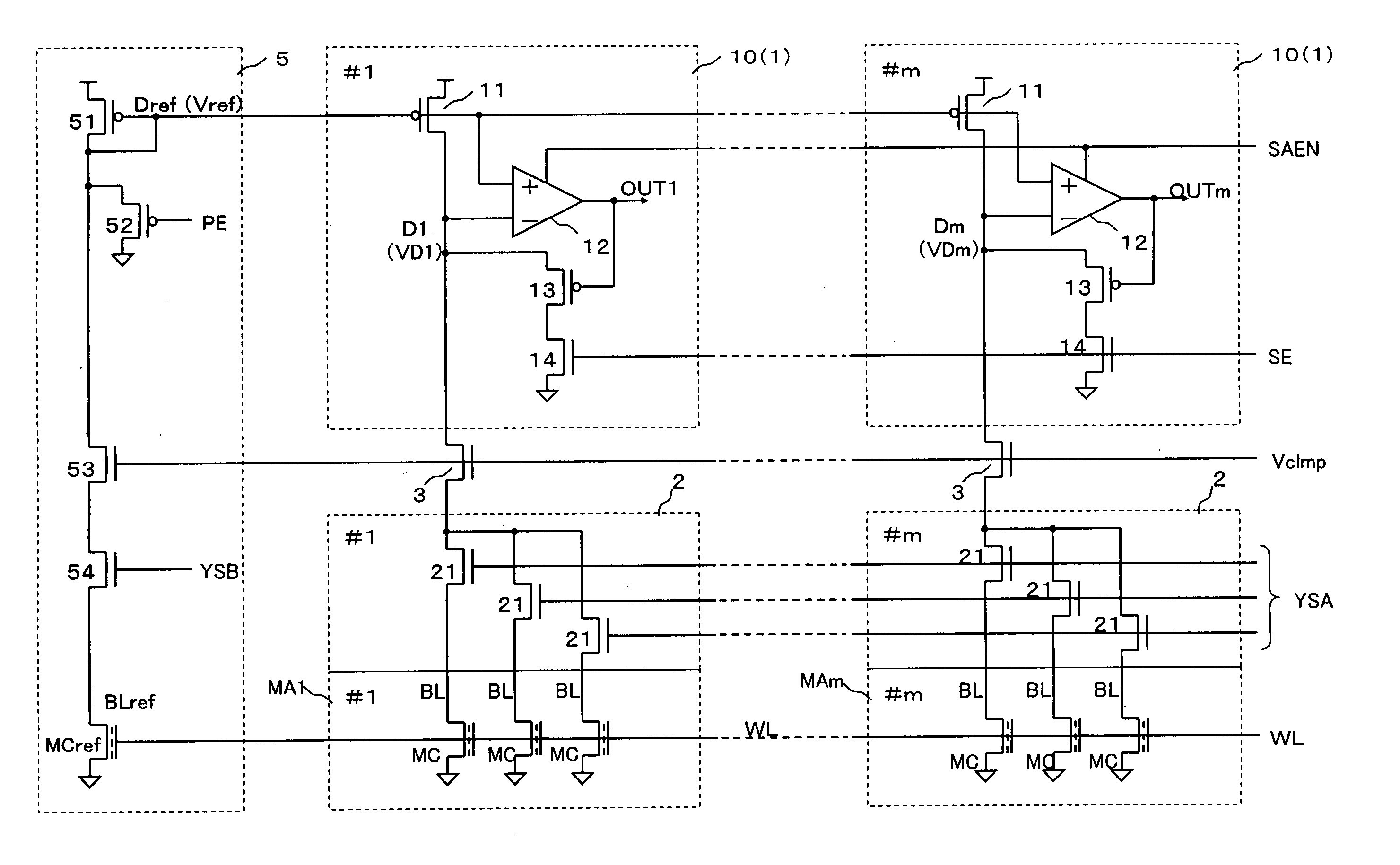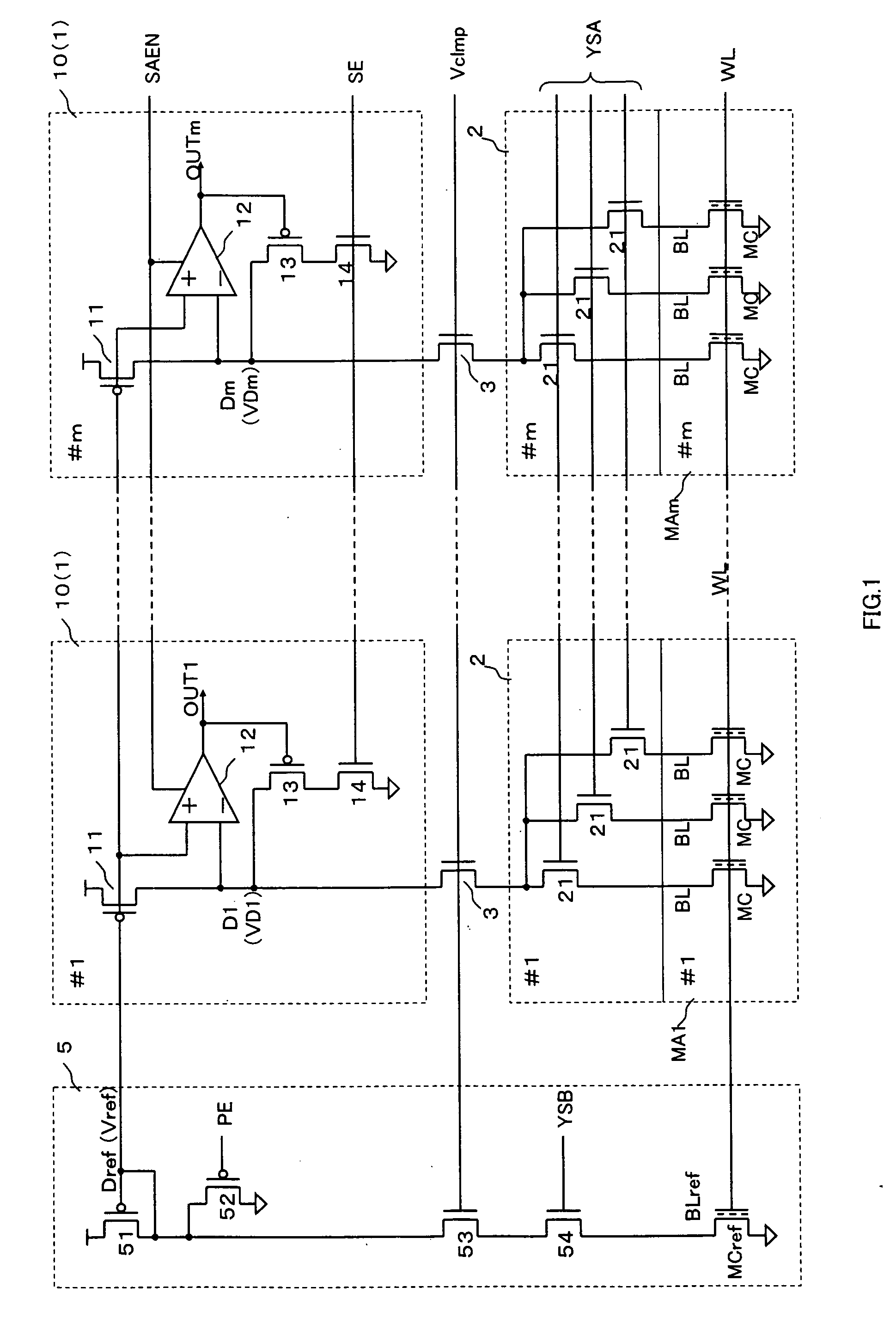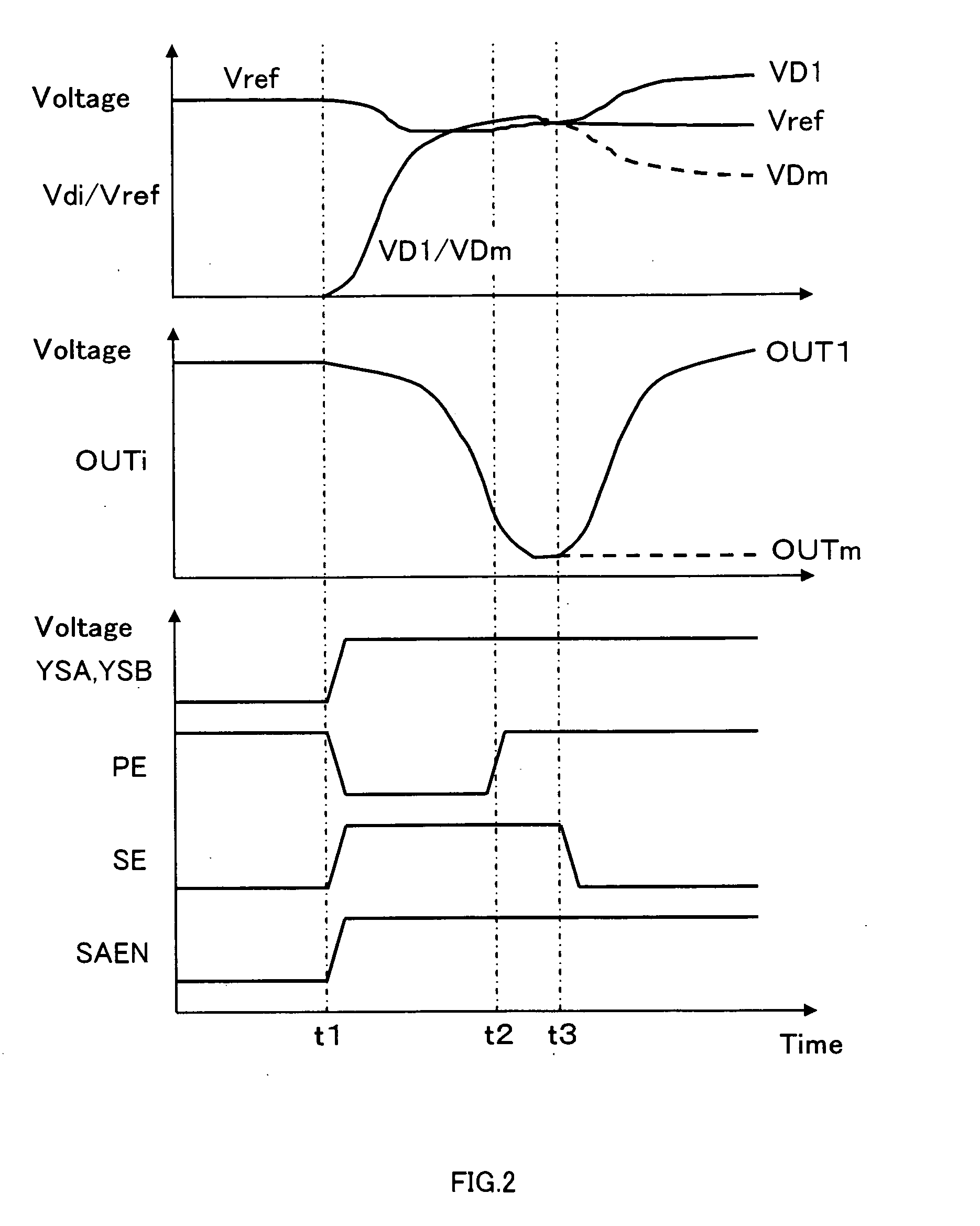Semiconductor readout circuit
- Summary
- Abstract
- Description
- Claims
- Application Information
AI Technical Summary
Benefits of technology
Problems solved by technology
Method used
Image
Examples
first embodiment
[0028]FIG. 1 is a circuit diagram illustrating the structure of the inventive circuit 10. In this embodiment, a semiconductor device that includes plural memory arrays MA1 through MAm is used. In each of the memory arrays MA1 through MAm, a memory cell MC is selected according to an address signal that is input to the semiconductor device from the outside or is generated inside the semiconductor device. The data stored in the selected memory cells appear as a minute potential change on data lines D1 through Dm that are provided for the respective memory arrays MA1 through MA1. The potential of each of the data lines D1 through Dm is compared with the potential of a common reference data line Dref, and the potential difference is amplified. One set of data are then read out from each of the memory arrays MA1 through MA1.
[0029] This embodiment is described on the assumption that the inventive circuit 1 is a flash-memory readout circuit. Therefore, flash memory cells of a floating gat...
second embodiment
[0043] In each inventive circuit 10 of the first embodiment 1, a series circuit formed by the PMOS 13 and the NMOS 14 is interposed between the data line Di and the ground line to form a current control circuit that controls the amount of current flowing from the data line Di to the ground line, according to the potential of the output OUTi that is the output as to the detected potential difference between the potential VDi of the data line Di and the reference potential Vref. In each inventive circuit 20 of the second embodiment, on the other hand, the PMOS 13 is replaced with an NMOS 23, so that the polarities of the differential inputs to the sense amplifier 12 are reversed as shown in FIG. 3. Thus, the same equalizing function as that of the first embodiment can be obtained. The other components and aspects of each inventive circuit 20 of the second embodiment are the same as those of the first embodiment, and therefore, explanation of them is omitted herein.
third embodiment
[0044] If the precharging of the bit lines BL takes a long period of time due to an adverse influence of parasitic capacitance or the like, the precharging of the data line Di also takes a long period of time. Therefore, the current for equalizing the data line Di to the reference data line Dref is also used as the current for precharging the data line Di. More specifically, the current control circuit is formed between the data line Di and the power supply line, so as to shorten the precharging time. Accordingly, in each inventive circuit 30 of the third embodiment, a series circuit formed by a PMOS 33 and a PMOS 34 is interposed between the data line Di and the power supply line as shown in FIG. 4. Also, the gate of the PMOS 33 is connected to the output OUTi of the sense amplifier 12, the source of the PMOS 33 is connected to the drain of the PMOS 34, the drain of the PMOS 33 is connected to the data line Di, the gate of the PMOS 34 is connected to the equalizing signal SE, the s...
PUM
 Login to View More
Login to View More Abstract
Description
Claims
Application Information
 Login to View More
Login to View More - R&D
- Intellectual Property
- Life Sciences
- Materials
- Tech Scout
- Unparalleled Data Quality
- Higher Quality Content
- 60% Fewer Hallucinations
Browse by: Latest US Patents, China's latest patents, Technical Efficacy Thesaurus, Application Domain, Technology Topic, Popular Technical Reports.
© 2025 PatSnap. All rights reserved.Legal|Privacy policy|Modern Slavery Act Transparency Statement|Sitemap|About US| Contact US: help@patsnap.com



